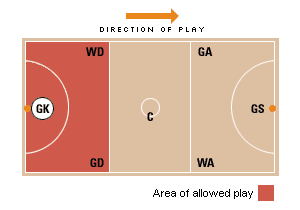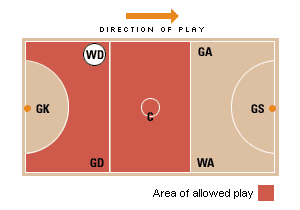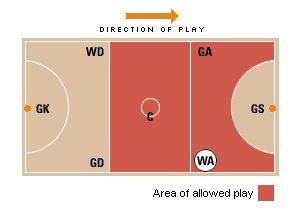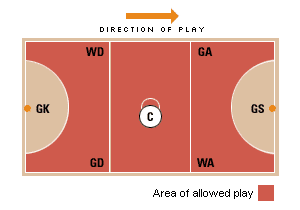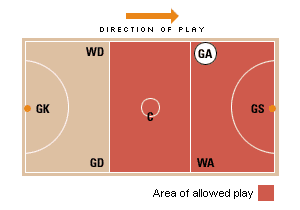As a competitive sport, Netball has seen a refreshing and somewhat surprising burst in popularity over the previous few years. The success of the England Women’s Team in this year’s Commonwealth Games recently highlighted the revival of the competitive scene for the sport, and the improvement of turnout and overall facilities of teams up and down the professional pyramid showcases the positive trend for the game, meaning there has never been a better time to get involved.
There are seven different positions across the court for any would-be players, all coming with their own skill sets, responsibilities and duties across an average game. Below are all of these uncovered, outlining the specific ins and outs of the challenges and objectives each role brings.
Navigate the article
#1 Goal keeper
The furthest back on the court, the goal keeper is responsible for their team's net and keeping the opposition team's score down to as low as possible. Only allowed to venture in the final goal third, the usual netball rules of only two steps when handling the ball apply here. When defending the goal from an attack, the goal keeper is allowed to try and block the ball with her arms, however this is only a luxury when they are at least a metre away from the attacker. One final duty of the goal keeper is being on top of rebounded efforts that have failed to go in from the opposition.
#2 Wing Defence
The heart of the defence, the key distinction between wing defenders and those defending the goal is their inability to directly defend it. Switching the play and quickly turning defence into attack is an important requirement of a wing defender, with a typical game often being decided on a team's ability to quickly get forward. Interceptions, blocking and man-marking remain focal points of a wing defender's style of play.
#3 Wing Attack
The wing attack revolves being on the receiving end of the centre's passing and being able to move the ball quickly towards more attackingly promising situations for the goal scorers. Speed and maneuverability is vital to a wing attack's positives in a game and having a good understanding with the fellow attackers will always yield more successful ventures. Every good wing attack will also try to employ as much communication as possible to their defenders and help get the game ticking in their favour.
#4 Goal Defence
Allowed in the furthest two thirds of the court and their own goal, the goal defence is responsible for breaking up the play, man-marking their opponents and intercepting when the ball is available. Because they are allowed in their goal, they can also be called upon to act as a makeshift goal keeper if the situation arises. Unison and communication between the goal keeper and goal defence is vital to a team's successful defence and will ultimately go a long way in deciding a game.
#5 Centre
Truly a jack-of-all-trades role, the centre is at the very heart of the game throughout its entirety. Restarting the game from the centre circle, the centre's role revolves around circulating the ball as quick as possible to their team's attackers. Alertness remains key to the centre's role as they are often required to turn on their heels and get back defending quickly in order to help out the remainder of their team. Needing a good set of lungs is important to the role as the centre is constantly asked to get the ball from one end to the other.
#6 Goal Attack
The ultimate position for probing and supplying the goals in a game, the goal attack has a wide range of possible positions and responsibilities depending on the tactics employed. Often reliant on a good relationship with the goal scorer, the goal attack will try and supply the final third of the court with the best possible scenarios to score, whether it be by themselves or with the goal scorers. Communication and an understanding of tactics and movements is obviously an incredibly instrumental feature of the goal attacker's position on the court and will often determine how well a team's game plan will carry out.
#7 Goal Shooter
Like the name suggests, the main priority of this position is obviously to score the vast bulk of the team's goals across a game. Only allowed in the final third of the court, a keen eye for an opening and a calm hand to finish a chance is so important to a scorer's objectives in a game. One added responsibility for the goal shooter is the taking of 'backlines' which revolves around circulating the ball back into play should it go out off the opposition.
This post was created with our nice and easy submission form. Create your post!









